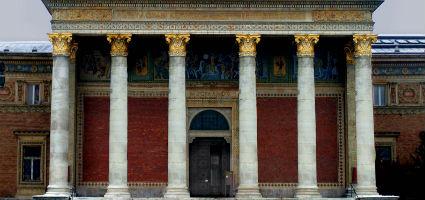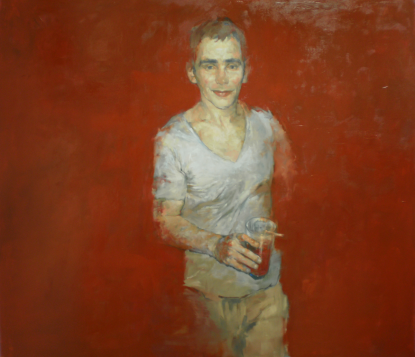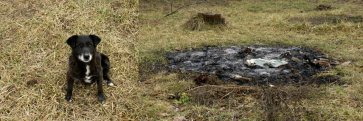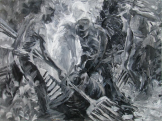2024. May 7. Tuesday
Kunsthalle - Budapest
 |
Address: 1146, Budapest Dózsa György út 37.
Phone number: (1) 460-7000, (1) 363-2671
E-mail: info@mucsarnok.hu
Opening hours: Tue-Wed 10-18, Thu 12-20, Fri-Sun 10-18
|
The exhibition has closed for visitors.
2015.06.16. - 2015.09.13.
Museum tickets, service costs:
|
Ticket for adults
|
1200 HUF
|
|
|
Ticket for adults
(valid for the Kunsthalle and the Ernst Museum)
|
1400 HUF
|
|
|
Group ticket for adults
(from over 10 people)
|
800 HUF
|
/ capita
|
|
Ticket for students
(EU citizens from the age of 6 to 26 )
|
600 HUF
|
|
|
Ticket for students
(valid for the Kunsthalle and the Ernst Museum, 6-26 years of age)
|
700 HUF
|
|
|
Group ticket for students
(from over 10 people)
|
400 HUF
|
/ capita
|
|
Ticket for pensioners
(valid for the Kunsthalle and the Ernst Museum, 62-70 years of age)
|
700 HUF
|
|
|
Ticket for pensioners
(EU citizens from the age of 62 to 70)
|
600 HUF
|
|
|
Ticket for families
(1 adults + 2 children)
|
1800 HUF
|
/ family
|
|
Ticket for families
(2 adults + 2 children)
|
2400 HUF
|
/ family
|
Cluj-Napoca (Kolozsvár, Klausenburg) is the European Youth Capital in 2015. The program’s mission is to support youngsters and youth organizations in their active participation in changing the society through a sustainable, responsible and inclusive urban development process, through linking Transylvania and Romania with the major urban centers in Europe. The aim of the Budapest Center is to present Cluj and the European Youth Capital 2015 project to the Budapest public. The communications partner of the Center is the Mathias Corvinus Collegium.

The Barabás Miklós Guild was founded by Károly Kós and Sándor Szolnay in 1929 as the advocacy group of the Transylvanian Hungarian artists. The inception of the Guild was modelled on and supported by ’the Helicon community’ of writers, and it received financial support from Count Miklós Bánffy. The Guild made its debut appearance in Cluj (Kolozsvár) at the Teleki Palace following its foundation in 1930. Its artists: Károly Kós, Sándor Szolnay, Imre Nagy, Dávid Jándi, Ignác Udvardy, Nándor Gallasz, Gyula Podlipny és Albert Varga, and later the younger artists: László András, Zoltán Andrásy, Péter Balázs, Irma Brósz, István Debitzky, Erzsébet Erdei, Júlia Ferenczy, István Incze, András Kós, Ferenc Kósa-Huba, Piroska Makkai, István Olajos, Gábor Piskolty, Edit Rodé, Júlia Tollas represented many different regions in Transylvania.
The relaunch of the Guild after decades of forced silence was initiated by the painter Béla Abodi Nagy and the sculptor András Kós – both emeritus professors and former chairs of the Ion Andronescu Art School in Cluj – and it was put into practice by 47 artists and art theorists in 1994. The new Guild answers to the demands of a new age and respects its own traditions. The Guild found a home after years of homelessness on 18 November 2005. This significant event meant the beginning of a busy Guild life: monthy exhibitions, lectures and talks were organized and encouraged by the Munkácsy-award winner painter Miklós Jakobovits who led the Guild from Nagyvárad (Oradea) from its relaunch until he was alive.

The Barabás Miklós Guild was founded by Károly Kós and Sándor Szolnay in 1929 as the advocacy group of the Transylvanian Hungarian artists. The inception of the Guild was modelled on and supported by ’the Helicon community’ of writers, and it received financial support from Count Miklós Bánffy. The Guild made its debut appearance in Cluj (Kolozsvár) at the Teleki Palace following its foundation in 1930. Its artists: Károly Kós, Sándor Szolnay, Imre Nagy, Dávid Jándi, Ignác Udvardy, Nándor Gallasz, Gyula Podlipny és Albert Varga, and later the younger artists: László András, Zoltán Andrásy, Péter Balázs, Irma Brósz, István Debitzky, Erzsébet Erdei, Júlia Ferenczy, István Incze, András Kós, Ferenc Kósa-Huba, Piroska Makkai, István Olajos, Gábor Piskolty, Edit Rodé, Júlia Tollas represented many different regions in Transylvania.
The relaunch of the Guild after decades of forced silence was initiated by the painter Béla Abodi Nagy and the sculptor András Kós – both emeritus professors and former chairs of the Ion Andronescu Art School in Cluj – and it was put into practice by 47 artists and art theorists in 1994. The new Guild answers to the demands of a new age and respects its own traditions. The Guild found a home after years of homelessness on 18 November 2005. This significant event meant the beginning of a busy Guild life: monthy exhibitions, lectures and talks were organized and encouraged by the Munkácsy-award winner painter Miklós Jakobovits who led the Guild from Nagyvárad (Oradea) from its relaunch until he was alive.


